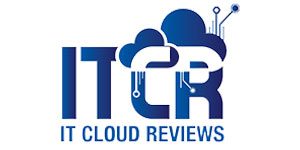As the remote work trend continues to grow, organizations are increasingly facing challenges in managing and optimizing the performance of their remote teams. Effective performance management is crucial for ensuring productivity, engagement, and satisfaction among remote employees. To tackle these challenges, companies must adopt innovative strategies and leverage performance management software to streamline and enhance their processes.
Table of Contents
Understanding Remote Performance Management
Performance management in a remote setting involves overseeing and guiding employees’ work and development, ensuring they meet organizational goals while working from various locations. Unlike traditional office environments, remote teams require a more flexible, technology-driven approach to monitor and support performance.
Key Strategies for Remote Performance Management
Set Clear Expectations and Goals
One of the foundational strategies for effective remote performance management is setting clear, achievable goals and expectations. Remote employees often work independently, so it’s essential to communicate specific objectives and deadlines. This can be achieved through tools and practices like setting SMART goals (Specific, Measurable, Achievable, Relevant, Time-bound) and using performance management software to track progress.
Utilize Performance Management Software
Performance management software is a vital tool for remote teams. These platforms offer features such as goal setting, performance tracking, feedback collection, and reporting. Software like Workday, BambooHR, and Lattice can help managers monitor individual and team performance, ensure alignment with organizational objectives, and provide valuable insights into employee productivity and development needs.
Implement Regular Check-Ins and Feedback: Regular communication is key to managing remote teams effectively. Schedule frequent one-on-one meetings to discuss progress, address challenges, and provide constructive feedback. Performance management software can facilitate these check-ins by providing reminders, tracking discussions, and ensuring that feedback is documented and actionable.
Foster a Culture of Trust and Transparency
Trust is crucial in a remote work environment. Managers should focus on building a culture of transparency where employees feel valued and supported. Regular updates on organizational goals, team performance, and individual contributions can help create a sense of inclusion and ensure that remote workers are aligned with the company’s mission.
Leverage Data and Analytics
Performance management software provides valuable data and analytics that can inform decision-making. By analyzing performance metrics, managers can identify trends, assess employee productivity, and make data-driven decisions to improve performance management strategies. Metrics such as project completion rates, goal achievement, and employee engagement levels can offer insights into how well the remote team is performing.
Encourage Professional Development: Remote work can sometimes lead to feelings of isolation and stagnation. To combat this, invest in continuous professional development opportunities for your remote employees. Performance management software can be used to track training progress, set development goals, and ensure that employees have access to relevant resources and courses.
Recognize and Reward Achievements
Recognition and rewards play a significant role in motivating remote employees. Implement a system for acknowledging and celebrating accomplishments, whether through performance management software features or other means like virtual awards or public recognition. Regularly highlighting individual and team successes can boost morale and reinforce positive behavior.
Adapt Performance Management to Individual Needs
Remote teams are diverse, and performance management should be tailored to individual needs and work styles. Use performance management software to gather feedback from employees about their preferences and challenges. Customizing your approach to suit different personalities and work habits can enhance engagement and productivity.
Ensure Work-Life Balance:
Remote work can blur the lines between professional and personal life. Encourage your team to maintain a healthy work-life balance by setting boundaries and promoting flexible work schedules. Performance management software can help monitor workload distribution and ensure that employees are not overwhelmed or overworked.
Continuously Improve Performance Management Practices: Performance management is not a one-time task but an ongoing process. Regularly review and refine your strategies based on feedback and performance data. Performance management software can assist in evaluating the effectiveness of your practices, identifying areas for improvement, and implementing changes to better support your remote team.
Conclusion
Managing remote teams effectively requires a combination of clear communication, the right tools, and a focus on employee development and well-being. Performance management software plays a crucial role in facilitating these strategies, providing managers with the tools they need to track performance, set goals, and support their remote employees. By adopting these strategies and leveraging technology, organizations can ensure that their remote teams remain productive, engaged, and aligned with their organizational goals.











